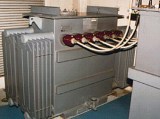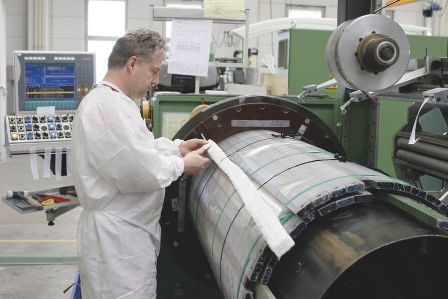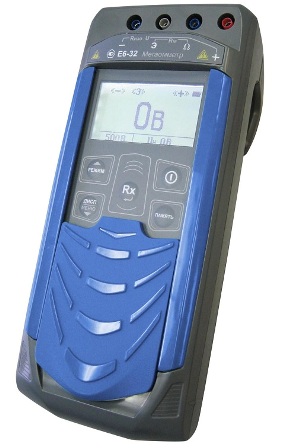Absorption coefficient
 In this article, we will focus on the absorption coefficient, which indicates the current state of hygroscopic insulation of electrical equipment. From the article you will find out what the absorption coefficient is, why it is measured and what is the physical principle behind the measurement process. Let's say a few words about the devices with which these measurements are made.
In this article, we will focus on the absorption coefficient, which indicates the current state of hygroscopic insulation of electrical equipment. From the article you will find out what the absorption coefficient is, why it is measured and what is the physical principle behind the measurement process. Let's say a few words about the devices with which these measurements are made.
"Rules for the installation of electrical installations" in points 1.8.13 to 1.8.16 and "Rules for the technical operation of consumer electrical installations" in Appendix 3 inform us that the windings of the motor, as well as the windings of the transformer, after major or routine repair , are subject to mandatory checks for the value of the absorption coefficient. This inspection is carried out within the period of planned preventive work at the initiative of the head of the enterprise. The absorption coefficient is related to the moisture content of the insulation and thus indicates its current quality.
Under normal insulation conditions, the absorption coefficient should be greater than or equal to 1.3.If the insulation is dry, the absorption coefficient will be higher than 1.4. Wet insulation has an absorption coefficient close to 1, which is a signal that the insulation needs to be dried. It should also be remembered that the ambient temperature affects the absorption coefficient, and during the test its temperature should be in the range from + 10 ° C to + 35 ° C. As the temperature increases, the absorption coefficient will decrease, and with a decrease it will increase.
The absorption coefficient is the dielectric absorption coefficient, which determines the moisture content of the insulation and allows you to decide whether the hygroscopic insulation of this or that equipment needs drying. The test consists of measuring the insulation resistance using a megohmmeter after 15 seconds and after 60 seconds from the start of the test.
Insulation resistance after 60 seconds — R60, resistance after 15 seconds — R15. The first value is divided by the second and the absorption coefficient value is obtained.
The essence of the measurement is that the electrical insulation is characterized by an electrical capacity, and the voltage of the megohmmeter applied to the insulation gradually charges this capacity, saturating the insulation, that is, an absorption current occurs between the probes of the megger. It takes time for the current to penetrate the insulation and this time is longer the larger the size of the insulation and the higher its quality. The higher the quality, the more the insulation prevents current from being absorbed during measurements. So, the wetter the insulation, the lower the absorption coefficient.

For dry insulation, the absorption coefficient will be much greater than unity, because the absorption current first sets sharply, then gradually decreases, and the insulation resistance after 60 seconds, which the megohmmeter will show, will be about 30% more than was 15 seconds after the start of the measurement. Wet insulation will show an absorption factor close to 1 because the absorption current, once established, will not change value much after another 45 seconds.
The new equipment should not differ in the absorption coefficient from the factory data by more than 20% down, and its value in the temperature range from + 10 ° C to + 35 ° C should not be less than 1.3. If the condition is not met, the equipment must be dried.
If it is necessary to measure the absorption coefficient of a power transformer or a powerful motor, use a megohmmeter for a voltage of 250, 500, 1000 or 2500 V. Additional circuits are measured with a megohmmeter for a voltage of 250 volts. Equipment with an operating voltage of up to 500 volts — a 500-volt megometer. For equipment rated from 500 volts to 1000 volts, a 1000 volt megometer is used. If the rated operating voltage of the equipment is greater than 1000 volts, use a 2500 volt megohmmeter.

From the moment of applying high voltage from the probes of the measuring device, the time is counted for 15 and 60 seconds, and the resistance values R15 and R60 are recorded. When connecting the measuring device, the equipment under test must be grounded and the voltage from its windings must be removed.
At the end of the measurements, the prepared wire must separate the charge from the coil to the box.The discharge time for windings with an operating voltage of 3000 V and above must be at least 15 seconds for machines up to 1000 kW and at least 60 seconds for machines with a power of more than 1000 kW.
To measure the absorption coefficient of the machine windings between them and between the windings and the housing, the resistances R15 and R60 are measured in series for each of the independent circuits, and the remaining circuits are connected to each other and to the body of the machine. The temperature of the circuit to be checked is measured in advance, preferably it should correspond to the temperature at the nominal operating mode of the machine and should not be lower than 10 ° C, otherwise the coil should be warmed up before carrying out of measurements.
The value of the smallest insulation resistance R60 at the operating temperature of the equipment is calculated by the formula: R60 = Un / (1000 + Pn / 100), where Un is the nominal voltage of the winding in volts; Pn — rated power in kilowatts for direct current machines or in kilovolt-amperes for alternating current machines. Ka = R60 / R15. In general, there are tables that show the acceptable values of absorption coefficients for various equipment.
We hope that our short article was useful to you, and now you know how and for what purpose it is necessary to measure the absorption coefficient of transformers, electric motors, generators and other electrical equipment with windings.
